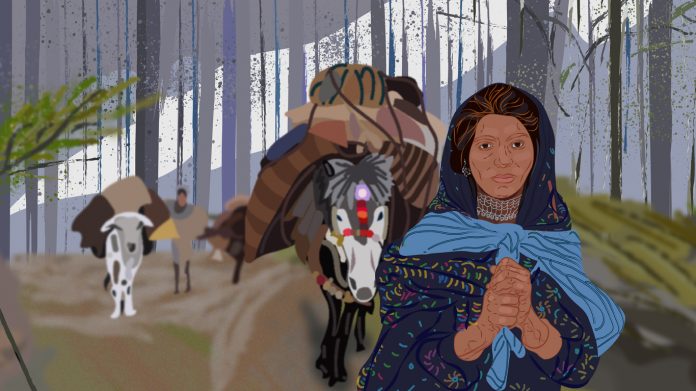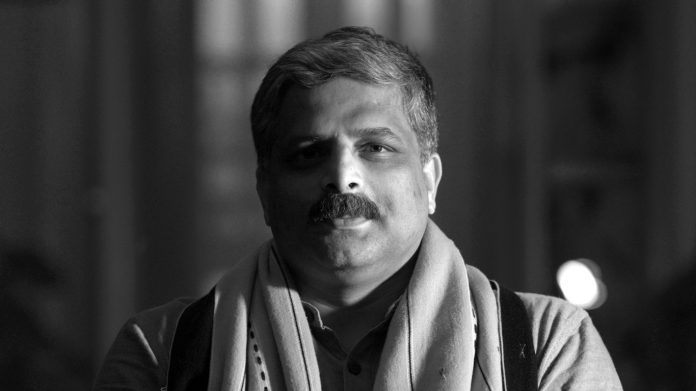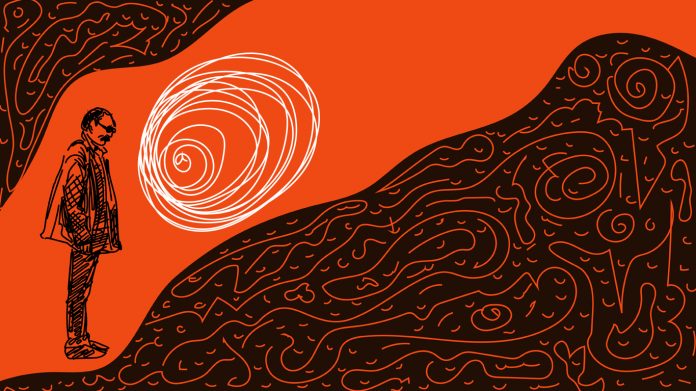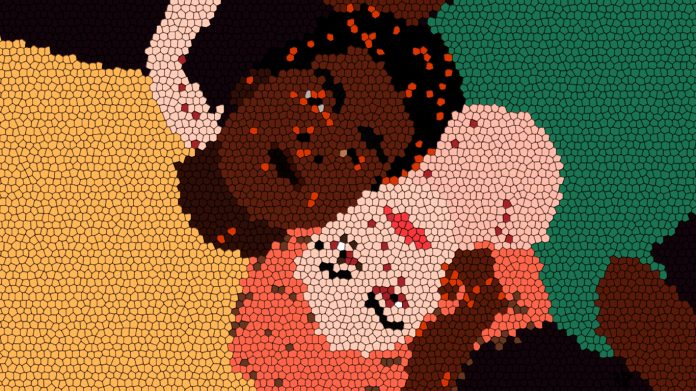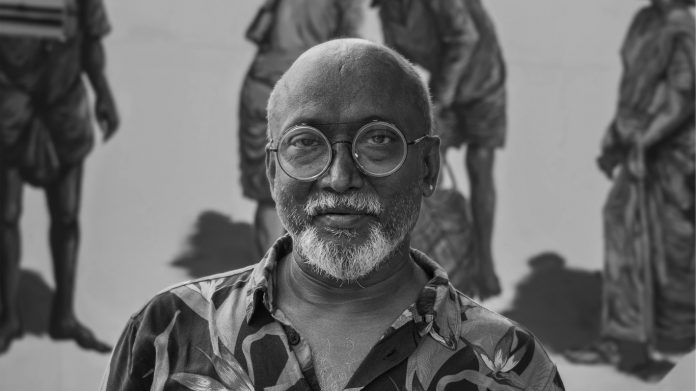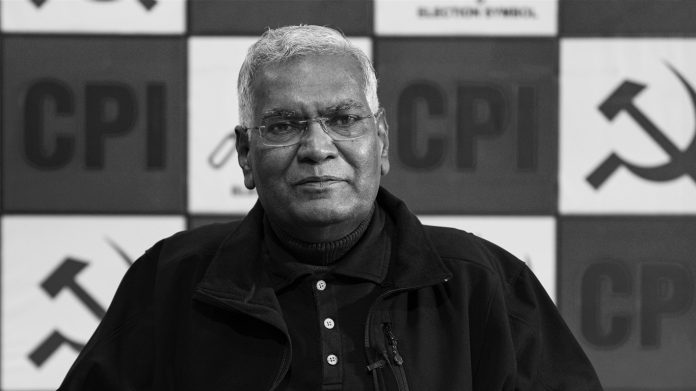“Wow, you look…” As soon as those words slipped from his mouth, he regretted conceding to a third drink at an office party. Had he been sober, he would have been able to retrieve in time a safe adjective, akin to “nice” or “good” to route the sentence he had begun into a friendly, but not too-friendly territory. But intoxicated as he was by alcohol and spelled by the suddenness of her beauty – he had never seen her looking like that – his unfinished sentence suspended in the air between them while he tried to recall or coin a word to communicate what he felt, with sincerity and propriety, and in that agape muteness, gave away everything speech could have withheld.
“Thanks! You look nice too, Sam,” Allie beamed audibly ending Sam’s misery, blushing at the compliment herself and hoping her make-up would conceal the flush she felt on her cheeks. In her long black sequined dress and dangling crystal earrings – neither haute couture, but both expensive and newly acquired for the occasion – with her hair tied in an elegant high bun and face made up immaculately, she did not just appear dazzling to others but felt so too. She was poised about her charm that night, yet his half-articulated compliment had titillated her. It was not her fault, she reminded herself gently.
The two men he had been chatting with before she showed up, in their nook by the fire, exchanged brief pleasantries with her, then excused themselves to go socialize with others. He asked her if she had just arrived and if she would like a beverage. To both she replied in affirmative, accusing traffic for the first nod and appending “white wine” to the second yes. While she settled in one of the easy chairs vacated by his previous company, he walked up to the bar counter and fetched her a glass of Chardonnay – the only white wine they were serving at the party.
“I am not leading him on. I am not.” She defended herself against her guilt. “So if I flirt with him a little? It’s not adultery. Not on my part, at least. I am not married. Heck, I am not even seeing anyone right now!” She steadied herself with a deep breath, anticipating another jab from her conscience. “I did not dress up like this to lure a married colleague, did I? This is a holiday party! How else am I supposed to dress or conduct myself here? Argh! I’ve got to stop feeling so guilty!”
“And, where the hell is his wife tonight?” When Sam was back with her drink, she paraphrased the question to him, with a smile and without a trace of profanity.
“Prachi is a little under the weather.” He replied, and took a sip of his drink to, only for a moment, avert his eyes from her gaze. He knew he had come off unconvincing in offering a fact but hiding the truth, the truth being the relief he felt in having been able to come to the party without Prachi.
She wanted to get to know him a little better, if only she could hush her mind’s ramblings: “Why would a happily married man show up to a party like this without his spouse? Perhaps the marriage isn’t going so well! They could have separated, or are thinking of separating. Or perhaps it’s an open marriage? Do Indian couples do that? Oh, fuck! Does thinking that make me a racist? Is this racism or xenophobia?” Pricked again from within, she pressed on him with her eyes to say more.
“She is sorry to miss the party. She was so looking forward to meeting everyone and having a good time. I was going to skip as well, but she persuaded me against it. I am glad she did. This is a great party!” He shared that moment with Allie as if he was sharing a secret with her, and the secret itself was that moment, in the making. He felt such warmth rising in him that he wanted to hug her – not in a way two colleagues at a holiday party could not, and yet the want thrilled him as much as it mortified him.
Samriddh Joshi went by Sam to be easier on his American colleagues. He migrated to the US from India in August 2006 to pursue a Ph.D.in Computer Science at Stanford University. Along with came his college sweetheart, Prachi Anand, to work towards the same degree at the University of California, Berkeley. Prachi and Sam had each been accepted into multiple prestigious programs, including a few in Europe, all promising full funding, and though their shared desire to be co-located in a foreign country was a prime factor in finalizing where to go, their relationship had been saved, at least at the time, from conflicts and resentment born out of compromises, when in the end, they had been able to make the same choices they would have without the other in the equation.
That is not to say that their relationship leading up to marriage had been a cakewalk. Their commitment or love, whichever was stronger, had been tested against the blows of social norms, with Sam’s family playing vigilante and making not the slightest attempt to mask or soften their disapproval over his dating a girl from a Dalit caste. They were a proud Brahmin family protective of their place at the peak of the societal pyramid. Hence, grave threats of disownment, banishment, and life-long silent treatment had been issued repeatedly to Sam by his father to keep him from marrying “down”. This had also quite naturally led to the issuance of distrust against him from Prachi’s folks. “He will not marry against his parents’ wishes. And even if he does, it’s not going to be easy because they’ll never treat you well. We don’t want you to get hurt, Beta.” Her father had tried to plead with her when she told him they were serious about each other and wanted to get married in a few years.
The couple had weathered this resistance patiently but with dwindling hope for sentiments to change over time. They eventually got married in October of 2009, while still in graduate school, amidst a small gathering of friends in Oakland. Prachi’s family watched the ceremony in real-time over a video chat on their living room desktop. A few weeks before her wedding she had received an email from Sam’s mother warning her to, for God’s sake, leave her son alone and to please let him focus on his priorities which of course were his family and his studies, in that order. The note had ended with a “God Bless” and a postscript: “If you don’t heed my words now and go on with this ‘relationship’ or whatever you call it, know that he will leave you sooner or later. You are not good enough for him but I am sure you are smart enough to see why.”
Prachi had waited until late that evening when they were both home to discuss the implications of the email. At this point in their relationship, she had stopped expecting Sam to arbitrate such matters with his family – he had previously tried to persuade them with reason, with a host of well-crafted arguments to make them understand the issues with their bigotry, while also steering clear of any name-calling – they were bigots all right, but calling them so also meant accepting the finality of who they were. As Prachi had feared, his every appeal for understanding and acceptance had only tightened the tenacity with which his parents held their views. So, she had to resort to building imperviousness to anything his parents said to him to justify their stance against her or her people. Still, the email had slighted her in its directness, in its listed and intended recipient being her and only her. She had been bullied. She had cried. He too had been appalled. He had apologized and entreated her to not let his Ma’s meaningless threats get to her. “Listen, should we just get married now?” He had asked then, looking slightly amused but sounding earnest.
That was three years ago when the idea of spending his entire life with Prachi, whom he had known, admired, and gradually fallen in love with since he was eighteen, was like being home overseas. Now, he still loved her, perhaps as much as he ever had. But he doubted if he was in love with her or, for that matter, had ever been. She was more familiar to him than anyone else was, including himself, and yet there was hardly anything about her he could not tolerate, which he was humble enough to be grateful for and human enough to not be entirely content with. It was not as if she didn’t challenge him intellectually or emotionally, not as if they got along perfectly as a couple. Their harmonious coexistence was rhythmically jolted by strong disagreements and light quarrels. Yet, there was a predictability about their conflicts – what they argued about, why, and how – that had begun to dull their effect on him, so he didn’t feel as hurt by her remarks as he needed to hurt her in turn, and acquiesced too quickly, without a passionate defense of his otherwise presumed rightness. Passionate reconciliatory love-making had consequently ceased too though they continued to have consensual sex.
The at-homeness in marriage he had glamorized as a bachelor was indeed conferred upon him, except that the appealing foyer of stability had led him inside a sticky labyrinth of sameness. Moored to a long-term partner, he now romanticized drifting. At the same time, he had no intentions to abandon her, neither in adultery, nor divorce – not for some ill-defined temptations. He knew he would be lost without her – his closest friend and wife.
He had started his job the same day as Allie in June, only six months before the holiday party they were now attending. On their first day at the company’s main office in San Francisco, they were in orientation together and when she had raised her hand to ask a question about getting access to a software package, he had really noticed her – more intently than he usually noticed co-workers’ appearances. She had creamy-white skin, large hazel eyes, and her brunette hair was tied in a ponytail. Nothing glaringly spectacular, yet that very instant he had felt drawn towards her, and the next instant he had felt guilty – not because he thought it morally wrong for a married guy to find anyone other than his wife attractive but because he fretted over potential unconscious biases that might fuel attraction for a specific kind of other. He tried hard emotionally to not fall prey to the same narrow set of beauty standards that outright disqualified or underrated the Blacks and Blackish-Browns of the world, and that had particularly marginalized his wife. He had always considered Prachi beautiful but most Indians did not. “We only have four girls in our class – one of them is about as pretty as the blackest crow,” he had overheard a classmate in college thus convey his misery to someone on the phone. Prachi had frequently been called “ugly” in India – sometimes even to her face. Even seemingly sympathetic acquaintances would compliment her sharp facial features only in reference to her complexion, “yes, they make up for your dark skin!” His own mother had grimaced when he had first introduced them to each other at their college graduation ceremony. She had later described her as too kaali as evidence for why she was not an eligible match for her handsome, lighter-skinned son. This was when his parents were yet to inquire into her caste for once that information came to light, it became the uncontested top item on their list of reasons to reject her as their future daughter-in-law.
For days since the orientation, Sam dwelled upon his attraction towards Allie, which only intensified as he got to know her better at work. He was exasperated with the analytical mind that forced him to dig deep into simple instincts, something as natural as an infatuation until he could see the unnatural in them. “At this point in my life, would I be attracted to Allie, if she was not a White American?” He could not turn off this self-imposed torture when all he was looking for was a set of clauses to add to his existing values, so it would be permissible for him to think about Allie in whatever manner he pleased, without straying from his marital vows.
He asked Prachi one day, “what do you think about open relationships?”
“You mean, for us?” Prachi replied, looking confused.
“No, generally about this concept of polygamy or open relationships. I recently read an opinion piece on it in the New York Times and I am still trying to wrap my head around it. You know, I mean I don’t think I have formed my own opinion on it yet, so I was wondering if you had any thoughts to offer. Do you think it can work long-term?”
“Hmm, I think it can work for some couples, maybe when both persons are equally into it and if there’s something about the relationship – or those individuals – that keeps them from getting jealous. I don’t think it’s for me though – I don’t know if I will be able to deal with the emotional complexity the arrangement might inflict on me.”
He looked intrigued but remained quiet. So she continued, “let’s say it’s us, hypothetically, in an open marriage. What will not destroy me is your physical proximity to another person, but if that proximity kindles an emotional connection that then becomes stronger than ours – maybe because she is a better fit for you now than I am – then I won’t know what to do. I love you, so I will want you to be happy with the person who might make you happier than I can, but I also love myself so I am not sure if I’ll be able to voluntarily step back or away from your life and altruistically bear the heartache.” She planted a peck on his cheek when she was done talking.
He smiled vaguely and said, “thanks for humoring me. To be completely honest, I would be tormented if you slept with someone else even if we had discussed it beforehand.”
Troubled by the revelations from his own introspections, he lost the will to pursue the topic any further.
It was after 1:00 am when he got home from the holiday party. He peeked into their bedroom to make sure Prachi was asleep, took off his shoes at the door, and tip-toed in to grab his laptop that lay on the nightstand at his side of the bed. He made a pit-stop in the kitchen to look for a remedy for his prickly throat. Thereupon, balancing in one hand a mug of hot ginger tea filled to the brim, and clutching a laptop under his other arm, he trudged towards the living room. He placed the mug on the coffee table and plopped himself in the center of the couch. Then his laptop lid was lifted, a Chrome browser was opened, an Incognito tab summoned, and these words were typed in the Google search bar: ‘least painful natural deaths’. A minute passed. He breathed in the awareness of his agency, then gulped it quickly with a swig of his medicinal tea. Finally, one of his fingers hit ‘Enter’.
During his ride back from the party, the inevitable had happened; he had made out with Allie in his fantasy. Prachi’s face, calm but knowing, had also kept flashing in his mind’s eye. For the first time in his adult life, he had felt and understood shame. “What if Prachi was dead?” He had thought. “No, I mean, what if I think about Allie, assuming Prachi is dead. Prachi would want me to move on if she died before me. Of course, I don’t want her to die! But if I imagine her dead just as a… what is it called, a role-play…it might even revive our relationship. Of course, I want her to live for very, very long!”
“But how did she die? Did she suffer a lot? How long has it been?” The analyst in his head had asked. He realized that a handful of finely concocted details about Prachi’s hypothetical death could permit him an imaginary fling with Allie. The premise he landed on was: Prachi died six months ago, suddenly but peacefully. The exact cause was to be established later after some research.
On the second of January the following year, he received a call from an unknown number informing him that his wife had been in a car accident. Her car was wrecked but fortunately, she had incurred only minor injuries and had been taken to a nearby hospital. “She is fine, just a little shaken up.” The voice on the other end said when he nervously asked again how she was.
They split up a week later.
There had been no arguments between them since the holiday party. She simply woke up one morning and confessed to Sam, “our marriage has been dead for some time now, Samriddh. It’s only now that I have found the courage to acknowledge it. Life is fragile, time is fleeting, and we owe it to our today to live it like it’s a new day – with hope and aliveness. We cannot be so scared of exploring the unknown, especially when the known has lost its thrill.”
“You are bored of me?” He posed in a daze.
“No, not of you but of us, of our relationship. And I don’t know if it’s because this ‘us’ is not what it used to be or because it is what it has always been. Either way, if we stayed married, we’d only be lugging its heaviness into our future.”
“I thought we were happy.”
“Are you?” She left it at that.
In the office the next day, he saw a woman approaching his desk holding two cups of coffee, one in each hand. She raised one cup to signal a hello, and he squinted a little in an effort to recognize her.
“Got you a dry cappuccino. Should we find a meeting room or do you want to walk and talk?” Allie said, handing him the lighter cup, then adding, “you don’t look so well. Is everything ok?” Her new year’s resolution was to not get involved with men unless they were 100% single. She rebuked herself for the feelings his disarrayed hair stoked in her.
He smiled lightly and took in her appearance in one long stare, recognizing a face that would never again torment him in his daydreams. But that face and many others would haunt his existence in the flesh. “What am I supposed to do?” He would inquire of himself often, before resigning to inaction.
“Thank you. I am a little tired. Didn’t sleep well last night.” He mumbled as he sank into his seat.




